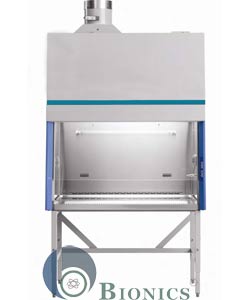The Comprehensive Overview About Biosafety Cabinet Class 2
Introduction
In the dynamic realms of laboratories and healthcare facilities, ensuring the safety of both operators and the surrounding environment is paramount. This is precisely where the Biosafety Cabinet Class 2 emerges as a stalwart guardian, equipped with cutting-edge technology to handle biohazardous materials with utmost precision and security.
Understanding Biosafety Cabinet Class 2
The Biosafety Cabinet Class 2 is a sophisticated piece of equipment designed to create a secure work environment by implementing a series of advanced features. One of the key components is its downward airflow system, strategically engineered to prevent the escape of harmful microorganisms and aerosols. This critical design element contributes to the overall efficiency and reliability of the biosafety cabinet.
Bionics Scientific Advancements
Within the realm of Biosafety Cabinet Class 2, Bionics Scientific integration takes safety measures to the next level. With enhanced technological features, Bionics Scientific ensures that the cabinets not only meet but exceed industry standards. The incorporation of state-of-the-art HEPA filters further enhances the cabinet's ability to maintain a sterile working environment, free from contaminants.
Applications in Various Sectors
Biosafety Cabinet Class 2 finds widespread utility in diverse sectors, including drug preparation, chemotherapy, clinical research, and operations within medical, pharmaceutical, life science, and industrial laboratories. Its versatility makes it an indispensable tool for ensuring the highest level of safety and compliance in handling biohazardous materials.
Compliance with Stringent Standards
Given the sensitive nature of the materials handled within Biosafety Cabinet Class 2, strict adherence to application-specific standards is imperative. Bionics Scientific cabinets are meticulously crafted to comply with these standards, providing users with the assurance that their workspaces meet the highest safety requirements.
Ergonomic Design for Operator Comfort
In addition to its advanced safety features, the Biosafety Cabinet Class 2 prioritizes operator comfort with its ergonomic design. The cabinets are crafted to facilitate efficient workflow while minimizing operator fatigue, ensuring a seamless and productive working experience.
Conclusion
The Biosafety Cabinet Class 2, fortified with Bionics Scientific advancements, stands as a beacon of safety in laboratory settings. Its ability to combine cutting-edge technology, stringent safety standards, and ergonomic design makes it an indispensable asset for professionals across various industries. As we navigate the intricate landscape of biohazardous material handling, the Biosafety Cabinet Class 2 proves to be not just a piece of equipment but a shield, safeguarding both life and progress in scientific endeavors.
#Biosafety Cabinet Class 2

Comments
Post a Comment